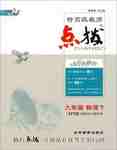题目内容
Some people believe _______ has happened before or is happening now will repeat itself in the future.
A. whateverB. whenever.
C. whereever D. however
A
【解析】
试题分析:本题考查宾语从句,考查方式为连接词。句意:有些人认为以前或现在正在发生的事情将来还会重复发生。根据题干信息,“过去发生或现在正发生的事情,将来仍然会重复”,宾语从句中缺少主语,并且指的是事件,所以选用A。
考点:考查宾语从句的用法

练习册系列答案
 特高级教师点拨系列答案
特高级教师点拨系列答案
相关题目
 Instead. focus on the teams that work well together You might say. "I want to express thanks to the design team for working together to meet the deadline this week," or -Special t
Instead. focus on the teams that work well together You might say. "I want to express thanks to the design team for working together to meet the deadline this week," or -Special t hanks to the finance department for their teamwork in making sure that the quarterly reports were accurate"
hanks to the finance department for their teamwork in making sure that the quarterly reports were accurate" of the whole city.
of the whole city.